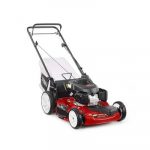Whether you are a neophyte or a seasoned gardener, you have heard the myths that seem to persist concerning what’s best for your garden. Your experience may have debunked many of those myths, but neophyte gardeners may still consider them real. Moreover, there are persistent myths that even the most experienced gardeners may believe are true.
In this article we will debunk some of the myths that may be influencing the way you garden.
Potted Indoor Plant Or Container Plant Myths
Many people who practice the art of gardening like to bring the growing of flora indoors. Thus they rely on pots or containers to host the plants.
One myth concerning potted or container plants is that a layer of rock or some other coarse material at the bottom of the pot or container enhances drainage.
Actually, plant-growing experts have concluded that adding coarse material such as stones, gravel, or shards is actually counterproductive. Experiments performed with pots that include potting soil and coarse material show that water drainage is hindered, not enhanced. Moreover, the coarse material at the bottom of the pot takes up valuable space for the plant’s roots.
Guidelines for planting in pots or containers call for:
- eliminating of coarse materials from the bottom of a pot or container.
- Filling the container or pot with a good potting mix instead.
- Including a mesh material like recycled mesh bags or a piece of a screen at the bottom of the pot or container to minimize the mixing of soil with water during draining.
If you are using a saucer under the pot or container to assure that water doesn’t get on furniture, be sure to empty water from the saucer after watering the plant.
Another myth concerning potted or container plants involve pesticides. The myth states that organic pesticides are safe.
Although it is true that organic products are superior to conventional alternatives, it is important for you to realize what’s in the ingredients of the formula. For example, insecticidal soap is actually a safe and effective organic option that has minimal negative effects on the environment. However, pyrethrum insecticide, which is derived from chrysanthemums, is organic and natural but, it is toxic to some beneficial insects, humans, and animals if not used properly.
The obvious conclusion here is that even though a product may be organic and natural, it isn’t necessarily safe to use. If a chemical is needed, use the one that is least toxic.
The extension department of your nearby university can provide you assistance when selecting the best chemicals to use in landscaping. It is also recommended that you follow the product’s instructions when using and disposing of chemicals.
Planting And Pruning Tree Myths
You might find it surprising that a newly planted young tree does not require staking as long as its root ball is strong and that it’s stable in the planting hole. The natural breeze helps a tree establish a sturdier trunk and root system.

(Source)
Staking may be necessary for a brief period of time if the tree is planted in a location where there is severe winds or a severe slope so the tree won’t stand up straight on its own.
Another myth concerning trees involves what to do to them after pruning. The myth says that the cut area should be covered with pruning paint to protect the wound. Although it is true that products used to cover a cut on a tree after pruning are available, they should not be used. In fact, it can cause more harm. Trees repair the cuts with their own built-in system, which seals or compartmentalize the wound. Using a paint to cover the cut could result in rot.
Lawn Myths
You may have heard that moss grows in lawns that require lime. Although there are a lot of reasons why moss may grow in lawns, it is not the result of acidic soil. Moss can grow wherever there is an open spot, too much shade, poor drainage or moist conditions, poor fertility or compacted soil. Don’t add lime to eradicate a moss problem unless a test of the soil shows that the soil is acidic.
If you’ve heard that mushrooms and toadstools sprouting on a lawn is a sign of soil deficiency, don’t pay much attention. In fact, fungi including mushrooms and toadstools show that there are plenty of nutrients in the soil. Rotting tree roots or decaying organic matter are likely reasons for the fungi. This signifies that there is nourishment being added to the soil.
(Sources: extension.psu.edu and laptopgardener.com)






